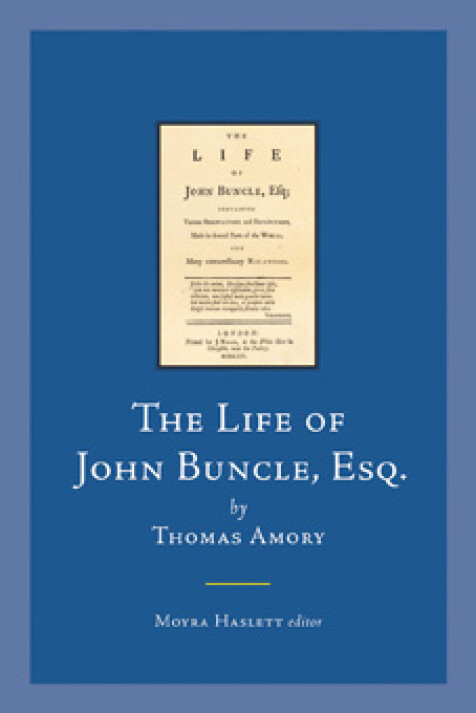The life of John Buncle, Esq.
by Thomas Amory
Moyra Haslett, editor
‘For quite some time Thomas Amory’s The Life of John Buncle (first published in London in 1756) has existed without a competent editor or annotator to stabilise and gloss this dense and complex text. Moyra Haslett’s definitive edition finally alleviates this situation, and in a particularly fine fashion … With an erudite (yet never fastidious) meticulousness, she confidently opens up the work, allowing the modern reader to appreciate the fiercely discursive and intertextual nature of this fictional autobiography … Haslett has not only provided us with an excellently edited edition. Her introduction is a substantial piece of original materialist research, one well grounded in a solid historical and literary matrix. She also provides the reader with a helpful glossary of theological terms and an extensive survey of bibliographical material … A book as fine as this one deserves as large and audience as possible', Niall Gillespie, Eighteenth Century Ireland (2012).
‘This critical edition of Thomas Amory’s “novel” serves to remind us of the importance of the development of fiction writing in the discussion of religion and religious ideas, as well as the growth of national consciousness and culture … there are moments of Irish wit and dry humour that clearly anticipate the comedy and style of the far better known Tristram Shandy … Moyra Haslett’s substantial Introduction and full notes provide the modern reader with a splendid means to appreciate the enthusiasm and eccentricity of the character of John Buncle … The Life of John Buncle, Esq. provides a fascinating insight into the early range and powr of the novel in the mid-18th century. Although Amory lacks the genius of Defoe, Swift, Richardson or Fielding, he has a sharp eye for the capacity of fiction to present serious issues with wit, irony and an imaginative sense of the absurd and the dramatic. We are in debt to Moyra Haslett for presenting this work to the contemporary reader in such a fine critical edition', David Jasper, Cuttings (March 2014).
‘[This is] a work in which is inscribed a definite awareness of a literary landscape that embraces the diversity and the possibilities of the still-developing novel form … The novel is a breathtaking tour de force, and Moyra Haslett is to be highly commended for her command of the work. She approaches her subject with a warmth and affection that she balances perfectly with the more workmanlike aspects of scholarly editing. She has presented the text (which she collated by examining the surviving versions) in an accessible manner; the introduction to the work is a superb (and necessary) guide for the reader, and the commentary is comprehensive and informative. Moreover, the editor has supplied a bibliography that includes a list of works to which Buncle refers in the text. Buncle enjoyed considerable success during the Romantic period when it was read by, among others, Charles Lamb, Hazlitt, Coleridge and Leigh Hunt. Credit is due to the editor, series editors and publishers that this idiosyncratic but intensely varied text is now recovered in a fine new edition. This critical edition not only recovers the text of Buncle but its place in and significance for the rise, and experimental nature, of the eighteenth-century novel in Europe', Carrie Griffin, Irish Literary Supplement (Fall 2012).

